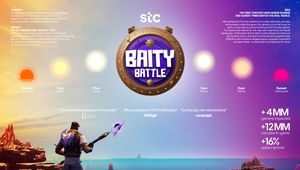
Where's The Juice?

Around the mid-'90s, everyone with a TV screen watched as the OJ Simpson trial unfolded.
It was the first time in US history that news channels were allowed to broadcast from inside the courtroom.
I was a kid back then, living in LA, and I remember my francophone parents, who barely spoke a word of English, glued to the screen.
I didn’t understand much about the story, but as years went by, I noticed how the case had an impactful influence on the culture to come.
A few years ago, the case turned into a TV series (obviously) and I regained interest.
Binge watching – one episode after another – sense checking online.
What really fascinated me were the similarities the case shared with modern-day advertising.
Its construct addresses a recurring paradigm we are facing in the communication era of data growth. An era where brands have overly applied performance marketing to their work, resulting in ads that lack empathy, because the data said ‘price matters most'.
Let’s look at how the OJ case played out.
The good guys, i.e. the prosecution, had every piece of hard evidence to prove 'The Juice' was indeed guilty. Facts.
Many will question whether or not the jury was educated enough to understand the meaning of forensic evidence, but the information was clear nonetheless. Data.
They had blood splatter, footprints, DNA, and probable cause – perfectly laid out.
They even brought in scientists to back up the findings, turning this into a tight-knit case that’s hard to break. Big data.
The prosecuting lawyers were so confident in the data they possessed that they felt no real need to go beyond the facts. Why would they, right?
Who can argue concrete numbers and figures? Data overreliance.
Well, Johnnie Cochran could - and he did.
He played the game differently. (side note: I wish he didn’t)
He was an articulate character that narrated the most captivating stories.
Yes, a storytelling lawyer fighting a case based on facts. Huh?
He found the right cultural tension, understood his audience empathetically, and tapped into behavioural triggers that would essentially move the jury to act in his favour. Strategy.
OJ was the underdog, part of a minority group, and it made sense that haters would be gunning for him as his success felt defiant. Insight.
To say Johnny Cochran ignored the facts would be a lie.
On the contrary, he embraced them. But the difference is his capacity to humanise data, into content that resonates with the audience.
He analysed the jury, understood at what moments to connect with them, and drew the perfect picture that can enable them to empathise with his client.
At the heart of it all, was the storyline. He used every strategic marketer’s trick to narrate a story, to the extent where he even coined one of the most famous slogans of all time “if the glove don’t fit, you must acquit”. Proposition. [Dave Trott spoke about this sentence. He referenced the power of rhythmic-logic. How that specific articulation was made to stick (I recommend you read his piece)]
I think we’re reaching a pivotal moment in advertising and communication where the abundance of data is misleading us. We believe in the numbers more than we believe in people, and we’re slowly losing our human touch.
We forget that data isn’t almighty in the absence of an empathetic response.
How many times have you sat in meetings where you had statisticians presenting a plethora of slides with numbers and percentages that tell you everything except that one thing: “why would my target care?”
The real answer lies within people, their nuances and their idiosyncrasies.
These are the elements that allow us to transcend data and trigger action that data (on its own) doesn’t necessarily warrant.
At the end of the day, behavioural change is a human process built on empathy, not a mechanical process built on data.
That’s what I think, from the data I’ve analysed… what do you think?













